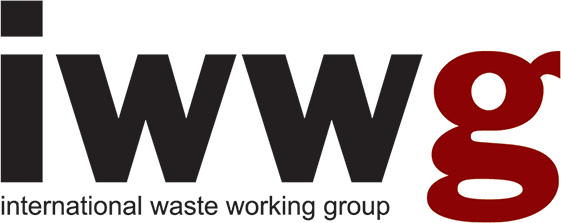ASCENDING THE WASTE HIERARCHY: RE-USE POTENTIAL IN SWEDISH RECYCLING CENTRES
- Available online in Detritus - Volume 09 - March 2020
- Pages 27-37
Released under CC BY-NC-ND
Copyright: © 2019 CISA Publisher
Abstract
According to the waste hierarchy principle, which constitutes the basis of European waste legislation, waste prevention and re-use are considered – most of the times – better waste management options than recycling. However, prevention and re-use activities are difficult to operationalise and measure, without a monitoring framework in place. This contribution investigates the potential of re-using end-of-life products that have been disposed at recycling centres in Sweden. Recycling centres receive a wide variety of materials for recycling, of which a portion could be re-used instead. The aim is to identify what product groups can be re-used, the share of these potentially re-usable products in the recycling centres, and under what conditions their re-use is feasible. A literature review of similar studies, site visits at recycling centres in Sweden, and semi-structured interviews with relevant stakeholders were used to analyse the potential for re-use in private recycling centres in Sweden. The most suitable product groups for re-use identified are building materials, furniture and electrical equipment (mainly white goods), as other material types are mostly handled by charity organisations (e.g. textiles). There is significant potential for increasing re-use operations in recycling centres, but in order to be economically profitable it is important to identify the most suitable material fractions (or product groups) and engage in strategic partnerships that will allow more effective organisation of re-use processes.Keywords
Editorial History
- Received: 25 Jul 2019
- Revised: 16 Oct 2019
- Accepted: 31 Oct 2019
- Available online: 05 Mar 2020
References
Avfall Sverige. (2014). Juridiska förutsättningar för förebyggande och återanvändning. Malmö, Sweden: Avfall Sverige
Avfall Sverige. (2015). Goda exempel på avfallsförebyggande. Retrieved from https://www.avfallsverige.se/fileadmin/user_upload/Publikationer/2015-03.pdf [accessed 30.04.2019]
Avfall Sverige. (2018). Swedish waste management 2018. Retrieved from https://www.avfallsverige.se/fileadmin/user_upload/Publikationer/Avfallshantering_2018_EN.pdf [accessed 30.04.2019]
BMLFUW (2010). Federal Waste Management Plan 2011. Bundesministerium für Land- und Forstwirtschaft, Umwelt und Wasserwirtschaft, Vienna
Bovea, M. D., Ibáñez-Forés, V., Pérez-Belis, V., & Quemades-Beltrán, P. (2016). Potential reuse of small household waste electrical and electronic equipment: Methodology and case study. Waste Management, 53, 204-2017.
DOI 10.1016/j.wasman.2016.03.038
Bryman, A. (2016). Social Research Methods (5th ed.). Oxford: Oxford University Press
Cole, C., Gnanapragasam, A., Singh, J., & Cooper, T. (2018). Enhancing Reuse and Resource Recovery of Electrical and Electronic Equipment with Reverse Logistics to Meet Carbon Reduction Targets. Procedia CIRP, 69, 980-985.
DOI 10.1016/j.procir.2017.11.019
European Environment Agency. (2017). Waste recycling indicator assessment. Retrieved from https://www.eea.europa.eu/data-and-maps/indicators/waste-recycling-1/assessment [accessed 30.04.2019]
Eriksen, M. P., Damgaard, A., Boldrin, A., & Astrup, T. F. (2018). Quality Assessment and Circularity Potential of Recovery Systems for Household Plastic Waste. Journal of Industrial Ecology, 23(1), 156-168.
DOI 10.1111/jiec.12822
European Commission. (2018). Directive 2008/98/EC of the European Parliament and of the Council of 19 November 2008 on waste and repealing certain Directives. Retrieved from https://eur-lex.europa.eu/legal-content/EN/TXT/?uri=CELEX:32008L0098 [accessed 30.04.2019]
Gåvertsson, I., Milios, L., & Dalhammar, C. (2018). Quality Labelling for Re-used ICT Equipment to Support Consumer Choice in the Circular Economy. Journal of Consumer Policy.
DOI 10.1007/s10603-018-9397-9
Gutowski, T. G., Sahni, S., Boustani, A., & Graves, S. C. (2011). Remanufacturing and Energy Savings. Environmental Science & Technology, 45(10), 4540‐4547.
DOI 10.1021/es102598b
Hultén, J., Youhanan, L., & Sandkvist, F. (2018a). Ökad återanvändning genom ökad samordning: Förstudie om en Återbrukshubb. Retrieved from https://urbanmagma.se/wordpress/wp-content/uploads/2018/06/%C3%85terbrukshubb-IVL-f%C3%B6rstudie-rapport-201801.pdf [accessed 30.04.2019]
Hultén, J., Youhanan, L., Sandkvist, F., Fång, J., Belleza, E., & Vukicevic, S. (2018b). Potential för ökad återanvändning – fallstudie återvinningscentraler. Retrieved from https://www.ivl.se/download/18.72aeb1b0166c003cd0d1b86/1542726511574/B2316.pdf [accessed 30.04.2019]
Ijomah, W., & Danis, M. (2012). Refurbishment and reuse of WEEE. In V. Goodship & A. Stevels (Eds.), Waste electrical and electronic equipment (WEEE) handbook (p 145). Cambridge, UK: Woodhead Publishing
Jannesson, E., & Nilsson, E. (2014). En prognostiserande SROI‐analys av Ideell Second Hand. Retrieved from http://www.sofisam.se/download/18.727874b114bb71d3df1ba2c5/1472023479950 [accessed 30.04.2019]
Lechner, G., & Reimann, M. (2015). Reprocessing and repairing white and brown goods - the R.U.S.Z case: an independent and non-profit business. Journal of Remanufacturing, 5, 3.
DOI 10.1186/s13243-015-0012-9
Ljunggren Söderman, M., Palm, D., & Rydberg, T. (2011). Förebygga avfall med kretsloppsparker: Analys av miljöpåverkan. Retrieved from https://www.ivl.se/download/18.343dc99d14e8bb0f58b75e0/1463409433760/B1958.pdf [accessed 30.04.2019]
Nußholz, J. L. K., Rasmussen, F. N., & Milios, L. (2019). Circular Building Materials: Carbon savings potential and the role of business model innovation and public policy. Resources, Conservation and Recycling, 141, 308–316.
DOI 10.1016/j.resconrec.2018.10.036
Öhgren, M., Milios, L., Dalhammar, C., Lindahl, M., 2019. Public procurement of remanufactured furniture and the potential for procuring product-service systems (PSS) solutions. Procedia CIRP, 83, 151-156.
DOI 10.1016/j.procir.2019.02.134
Ramusch, R., Pertl, A., Scherhaufer, S., Schmied, E., & Obersteiner, G. (2015). Modelling informally collected quantities of bulky waste and reusable items in Austria. Waste Management, 44, 3-14.
DOI 10.1016/j.wasman.2015.07.015
SEPA. (2017). Vägledning till MPF 29 kap. Avfall. Retrieved from https://www.naturvardsverket.se/upload/stod-i-miljoarbetet/vagledning/miljoprovning/29-kap-avfall-vagledning.pdf [accessed 30.04.2019]
SEPA. (2018). Konsumtionsbaserade växthusgasutsläpp per person och år. Retrieved from https://www.naturvardsverket.se/Sa-mar-miljon/Statistik-A-O/Vaxthusgaser-konsumtionsbaserade-utslapp-per-person/ [accessed 30.04.2019]
Shaw, P., & Williams, I. (2018). Reuse in practice: The UK’s car and clothing sectors. Detritus, 4, 36–47.
DOI 10.31025/2611-4135/2018.13735
STENA. (2016). Sustainability Report 2016. Retrieved from https://www.stenarecycling.se/contentassets/e3892f8740494cbcacd79c9490a189fd/hallbarhetsredovisning_2016_eng.pdf [accessed 30.04.2019]
Sundin, E., & Lee, H. M. (2012). In what way is remanufacturing good for the environment? In M. Matsumoto, Y. Umeda, K. Masui, & S. Fukushige (Eds.), Design for innovative value towards a sustainable society: Proceedings of EcoDesign 2011: 7th International Symposium on Environmentally Conscious Design and Inverse Manufacturing (pp. 552-557). Dordrecht, Netherlands: Springer
Vandeputte, A., Lemahieu, V., Van Rumst, T., Pauwels, H., Wagendorp, T., Poelmans, E., Blondeel, J., & Willem, M. (2015). How to start a Re-use Shop? An overview of more than two decades of re-use in Flanders. Retrieved from https://www.ovam.be/sites/default/files/atoms/files/2015_Folder-Kringloop-engels_LR.pdf [accessed 10.10.2019]
Vanegas, P., Peeters, J. R., Cattrysse, D., Tecchio, P., Ardente, F., Mathieux, F., Dewulf, W., & Duflou, J. R. (2018). Ease of disassembly of products to support circular economy strategies. Resources, Conservation and Recycling, 135, 323–334.
DOI 10.1016/j.resconrec.2017.06.022
Watson, D., Gylling, A. C., Tojo, N., Throne-Holst, H., Bauer, B., & Milios, L. (2017). Circular Business Models in the Mobile Phone Industry. Copenhagen, Denmark: Nordic Council of Ministers.
DOI 10.6027/TN2017-560
Wieser, H., & Tröger, N. (2018). Exploring the inner loops of the circular economy: Replacement, repair, and reuse of mobile phones in Austria. Journal of Cleaner Production, 172, 3042-3055.
DOI 10.1016/j.jclepro.2017.11.106
WSP. (2012). Förslag till ändring av miljöbalken: Konsekvensanalys av tydligare kommunalt ansvar för återanvändning av hushållsavfall. Retrieved from https://sverigesradio.se/diverse/appdata/isidor/files/3345/12115.pdf [accessed 30.04.2019]
Ylä-Mella, J., Keiski, R. L., & Pongrácz, E. (2015). Electronic waste recovery in Finland: Consumers’ perceptions towards recycling and re-use of mobile phones. Waste Management, 45, 374–384.
DOI 10.1016/j.wasman.2015.02.031
Zacho, K. O., Mosgaard, M., & Riisgaard, H. (2018). Capturing uncaptured values – A Danish case study on municipal preparation for reuse and recycling of waste. Resources, Conservation and Recycling, 136, 297–305.
DOI 10.1016/j.resconrec.2018.04.031
Zajko, K., & Hojnik, B. (2014). Key factors of starting up and developing reuse centres. Business and Management Dynamics, 4(6), 14–25




